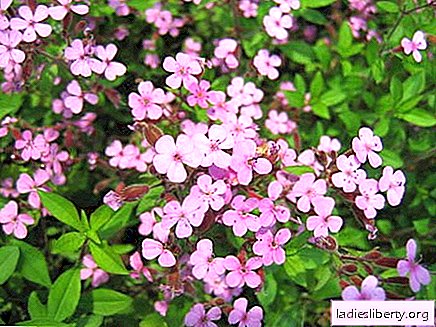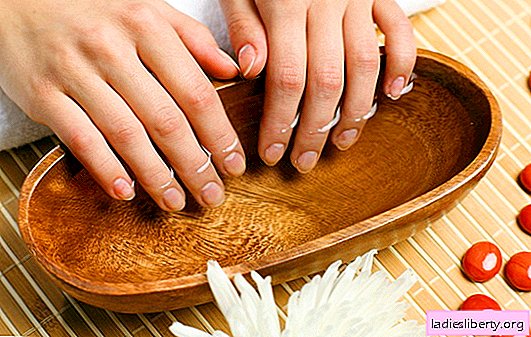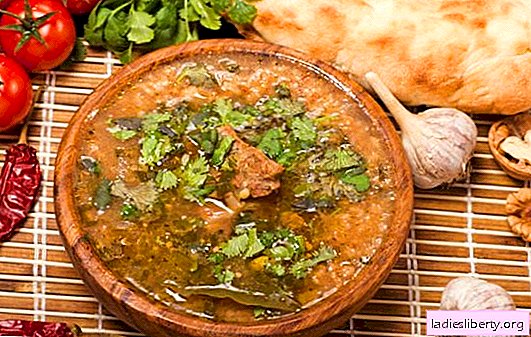
Mylnianka - general description
Mylnianka called a herbaceous plant of the clove family, which in height can reach from 30 to 100 centimeters. Rhizome - reddish-brown, stems - numerous, straight and bare, leaves - oval. The flowers have a fragrant aroma and pale pink color; they gather in a corymbose-paniculate inflorescence. The plant can be found blooming throughout the summer.
All parts of the grass, especially roots and rhizomes, contain saponins, which can foam like soap. Therefore, the plant is popularly called "dog soap." Such substances are part of creams and cosmetics for hair, detergents for silk and wool, as well as cleaning contaminated surfaces and removing stains.
In France, the soap dish is known as an insecticide, so it is bred for decorative purposes. Veterinarians prescribe rhizome as an emetic and anthelmintic. In gastronomy, roots are added to sodas, beer, halva and sparkling wines.
Mylnianka - types and places of growth
Mylnyanka is widespread in southern and central Europe, Western Siberia, Central Asia, the Caucasus, mainly in the forest-steppe and steppe zones. Grass grows along the edges of the forest, on the sandy banks of rivers, clogged fields and flood meadows, runs wild in neglected flower beds and near housing.
Mylnianka - healing properties
Water extracts from the aerial parts of soapwort and roots are widely used as a strong expectorant and antitussive for bronchitis, pneumonia, whooping cough, and excruciating cough. With the help of grass, it is possible to reduce the wheezing that is emitted from the chest with respiratory ailments.
Infusions from the leaves are often prescribed to people with metabolic disorders, or in the presence of skin pathology to cleanse the blood - psoriasis, eczema and furunculosis. A decoction of rhizomes is used for rheumatism, joint pain, chronic hepatitis, cholecystitis, diseases of the intestines and stomach, diseases of the spleen, nausea, constipation, excessive bloating and heartburn.
Other properties of the plant are known - choleretic and diuretic for the treatment of dropsy, edema of hepatic and renal origin. Decoction treat infectious ailments, remove stones from the gallbladder. In the form of lotions, baths, ointments and gruel from powder, soap dish treats scabies, purulent wounds, scrofula, dermatitis, erysipelas, scaly lichen and various skin rashes. The root of the plant is chewed with acute toothache, and tincture with angina is gargled.
Mylnianka - dosage forms
In some countries, the use of soap dish is officially allowed, but in Russia, infusions of herbs are rarely prescribed, mainly for diseases of the bronchi. As a medicinal raw material, roots and rhizomes are used, which should be harvested in late autumn and stored in tissue bags. According to traditional medicine, leaves are also used, which must be collected during the flowering period.
Mylnianka - recipes
With furunculosis, one teaspoon of chopped rhizome is poured with a glass of boiling water, insisting for 4 hours. Use 3 times a day for 2 tablespoons immediately after a meal.
For compresses and shampoos with herpes zoster and herpes, it is recommended to prepare such an infusion: pour half a liter of boiling water over two tablespoons of the roots and boil for 5 minutes over low heat for use on the affected area.
To cure bronchitis or pneumonia, add 1 teaspoon of grass roots to a glass of cool boiled water and insist for 8 hours. You need to consume 3-4 times a day, 50 grams after a meal.
Mylnianka - contraindications
When preparing decoctions, it is worth remembering that all grass is poisonous, especially the underground part. When taking large doses of infusion, abdominal pain, nausea, vomiting, coughing, diarrhea occur. A characteristic sign of poisoning is a sweet-burning taste in the mouth, as well as a feeling of mucus. Poisoned people are advised to rinse their stomach and take an enveloping agent. Since soap dish is toxic, it should be used in a short course and with the permission of the attending physician. Drugs should be consumed only after a meal.
Comments











